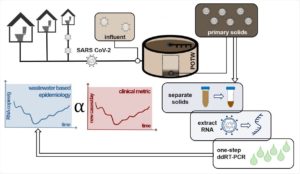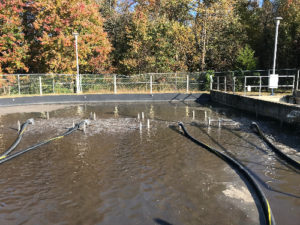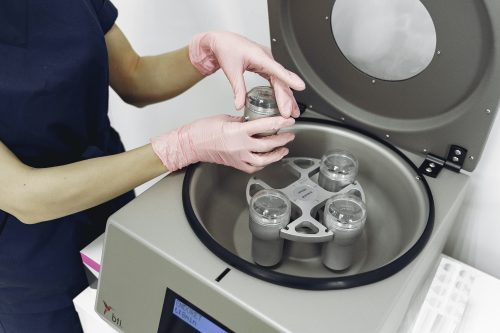A letter from Entex’s VP of Engineering, Jeff Danner
Throughout the Covid-19 pandemic, I have been noticing reports of the detection of the novel corona virus in wastewater and the potential utility in monitoring it as public health tool. The U.S. CDC has been following these results as well and has published official guidance on wastewater surveillance testing.
It was not obvious, at least to me, how a respiratory virus would end up at a wastewater plant, so I decided to learn a bit more. A surprising and troubling aspect of the novel corona virus (SARS-CoV-2) is its ability to infect cells beyond just the lungs and to cause damage to a wide range of bodily systems. For example, SARS-CoV-2 infects a class of cells within the small intestine. As these cells shed, they are excreted in feces and then head to the wastewater plant.
The presence of SARS-CoV-2 in wastewater plants is detected with PCR testing, the same test used for nasal swabs. Since the virus is contained in the feces, the best sampling point in the plant is the primary sludge, since there is where the virus would be in its highest concentration. However, influent samples can also be used. If your plant is asked to participate in a Covid-19 surveillance effort, it is important to know that the virus is inactivated during its transit through the intestines. Therefore, operators or lab technicians are not at risk of infection from the wastewater or sludge.

The wastewater plant in St. Clements Shore, MD, which was upgraded to an Entex IFAS system for total nitrogen control (case study), is participating in a surveillance effort in conjunction with St. Mary’s College of Maryland. According to plant operator, Woody Norris, all wastewater plants in St. Mary’s County along with a home for veterans are collecting samples for analysis. The goals are to establish a baseline for the area to enable the detection of new outbreaks so that local public health officials can take proactive measure to protect the community.

Testing of wastewater for virus as an aide to public health efforts is not a new idea. For example, it was deployed very successfully around the globe in the 1990s for regional allocation of polio vaccine as part of eradication efforts. Testing of wastewater for SARS-CoV-2 has shown that the virus can be detected several days sooner than nasal swab tests, providing an early warning system for community spread so that mitigation efforts can begin sooner. The response can be fine-tuned, by moving upstream in the sewer system, testing lift stations, manholes, and the like to further pinpoint the response. Further, during the upcoming roll out of vaccines (can I get mine yet??), wastewater testing can be utilized to follow the regional decline and, hopefully, elimination of the virus.
Wastewater treatment has been a stalwart in public health improvements for millennia by staving off water-borne diseases like cholera and allowing us to safely live together in high-density cities. Working in the industry myself, it’s good to know that we can and are still contributing today. Stay safe out there everyone.
